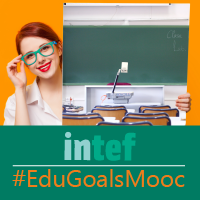Activity title : OTHER UNITS OF MEASUREMENT
Brief description of the collaborative activity
It is a collaborative work between students of 1st course of ESO (12 - 13
years old), studying in schools of different countries with different language.
In this case, we have chosen spanish and english languages.
When we deal with the lesson about units of measurement in class, I tell my
students that in another time, different countries used different units of
measurement. To establish a common criterion, especially in the field of
science, the International System of Units (S.I.) is created.
Starting from this point, the students are encouraged to investigate about
other units of measurement, which don't belong to the S.I, used in the past or
nowdays in the different countries (Spain and UK).
Students should establish the equivalence between the units they have found
and the units of the S.I., too
Teachers involved
Me in Spain, and other maths teacher in UK
Description of the classes and students involved
1st course of ESO ( pupils of 12-13 years old)
Duration
2 weeks
Objectives
- Learn more about the units of mesurement
- Increase the cultural knowledge of the students
- Encourage the students to interact with people from other country.
- Motivate the students to improve the foreign language
- Develop technological skills using different apps o software
Tools teachers will use to plan the collaboration
Google Docs and Skype
Collaboration tools students will use to complete the tasks
Skype, Google Drive, Padlet, Google Docs, Google Presentation and Gloster
Materials / handouts
They can look for information in the Wikipedia, or thematic encylopedia
Articles in magazines or web pages
Proposed
project timeline and details
Dates
|
Activity
|
Planning Details & Resources
|
1st week
|
Search for information.
|
Firstly, students from each country should look for
information about the units of measurement used in their countries. They will
use Google Drive to share the information they find. With Google Docs tool
they will create a text document, in which they will include the selected
units of measurement and the equivalences with the international units. They
will also share the images of the instruments used for those measurements.
After that they will create a poster (using Padlet or Gloster) or a
presentation (using Google Presentation) collecting all the research
information in an attractive way.
|
2nd week
|
Introduction of the students and exchange
of works
|
Using Skype, students from the both countries should be in
touch, introducing themselves, and showing their work to the others. the
Finally, students from both countries will exchange their works and they will
do an oral presentation in class, speaking about the different units of
measurement in both countries.
|
Activities or tutorials for getting students familiar with
the collaborating tools
Teachers should give some clues to the students in order to
help them to use the necessary tools to accomplish the task.
They can use youtube videos to learn about the different
software they will use, or do other types of exercises.
Post tasks for getting students to reflect on the successes
/ obstacles of the collaboration
At the end of the lesson we will have a discussion or round
table for sharing what we have learnt, and for speaking about the experience of
collaborating with students from another country.




